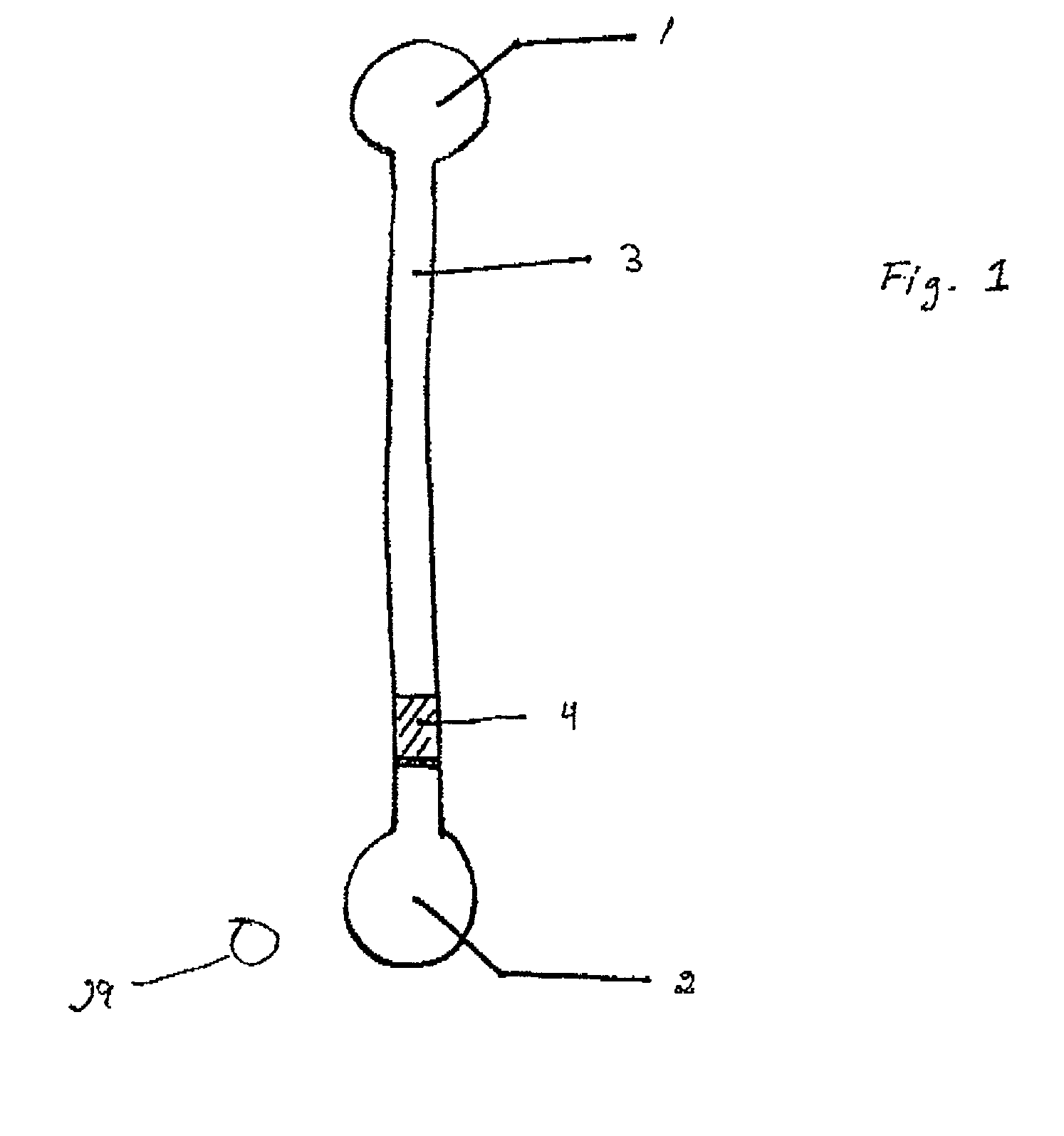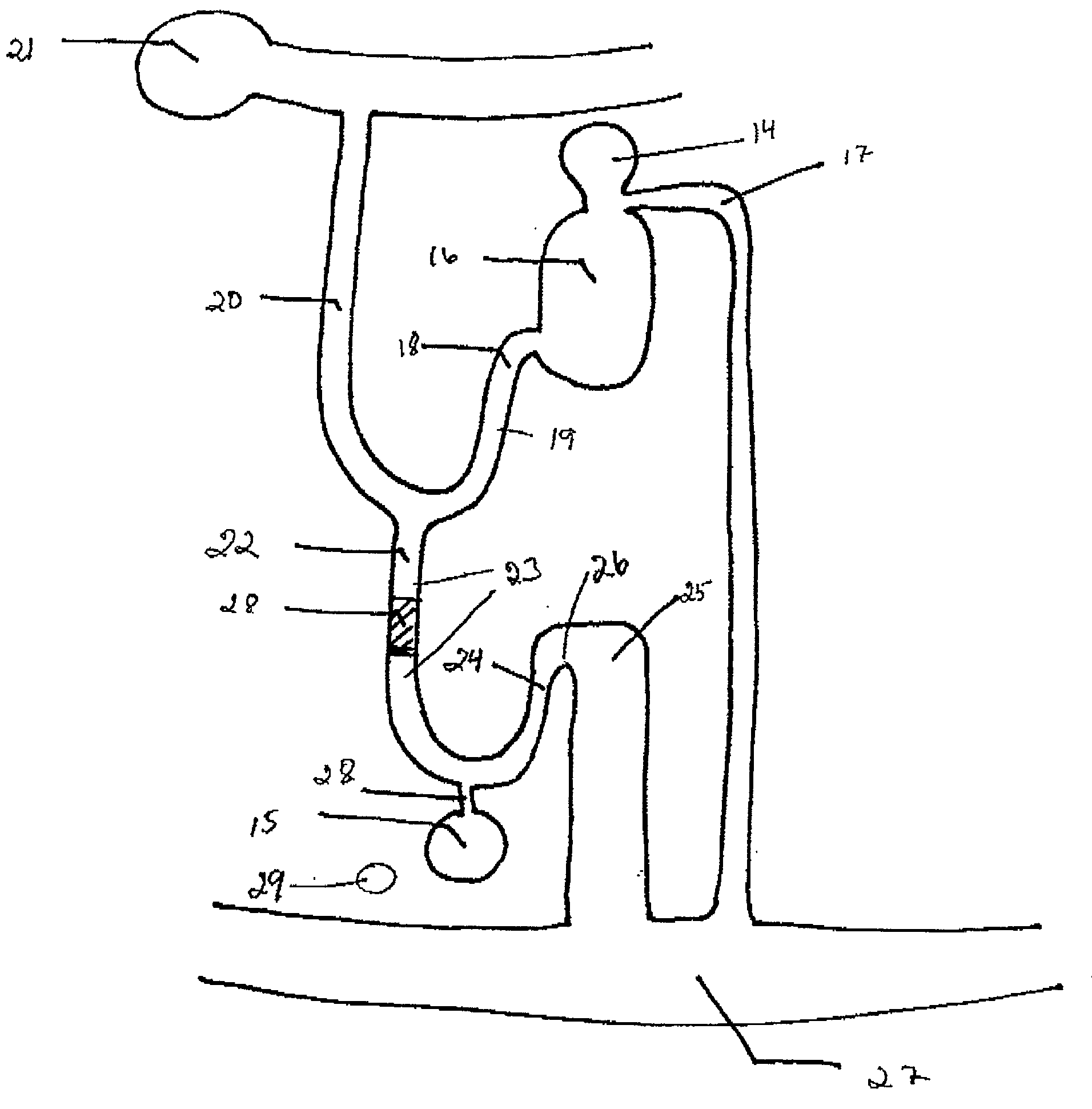Microfludic system (EDI)
a microfludic system and fluorescence technology, applied in the direction of positive displacement liquid engine, isotope separation, particle separator tube, etc., can solve the problems of imposing extra complexity on the design and use, negatively affecting production costs, and easiness of handling etc. of the devi
- Summary
- Abstract
- Description
- Claims
- Application Information
AI Technical Summary
Benefits of technology
Problems solved by technology
Method used
Image
Examples
example 1
Gold at Different Positions in a CD
[0146]
1 Charging of Gold patterning Sensitivity* substrate** No gold Poor Yes Gold on all sides Good No Gold on upper side Good No Gold on bottom side Good Yes Isolated gold spots on the upper side Good Yes Gold spots on the upper side. Every Good No spot being conductively connected contact with the adapter plate through an individual gold string or a common gold area. *Good = sensitivity for a in-solution tryptic digest of BSA comparable to the sensitivity obtained on a conventional stainless steel target ** Charging is observed as significant mass shift ( .gtoreq. 1 Da) upon repeated laser desorption / ionization and / or loss of signal.
[0147] This table shows the results form a summary of experiments performed in order to optimise the design of the CD-MALDI interface. Gold was sputtered at various positions of the CD and the MALDI characteristics were studied for a tryptic digest of Bovine Serum Albumin (BSA). The CD was placed on a metal adapter i...
example 2
Testing of Crystallization on the MALDI Surface
[0148] Microfluidic device: The CD was fabricated of polycarbonate . Each microchannel structure in the CD only contained an inlet port (uppstreams), the ms-port (downstreams) and a flow conduit between. The inlet and ms-port consisted of open areas made by drilling holes in the lid before covering the CD with the lid, i.e., the open areas on the CD was in contact with the surrounding atmosphere. Only a minor part of the flow conduit at the ms-port was in connection to the open area. The width and the depth of the microchannel leading into the ms-port were 100 .mu.m and 40 .mu.m, respectively. The open area of the ms-port had a cylindrical geometry with a diameter of 300 .mu.m (drilled hole) and depth 70 .mu.m., where the depth is the thickness of the lid. The bottom of the open area, therefore, constituted of the upper surface of the CD (and a minor part of the microfluidic channel) while the walls surrounding the open area, and restri...
example 3
Planar CD and Structured Removable Lid
[0152] This example shows a planar CD in combination with a lid in which the microfluidic structures are present. The structured lid was achieved through casting Memosil (Hereaus, Germany) against a nickel-coated master. The microfluidic structure employed in this example is shown in FIG. 2.
[0153] The structured lid is attached to the CD by adhesion forces. The surface facing the lid should be hydrophilic as the presented invention utilizes capillary action to fill the microfluidic structures. This is especially important as the moulded lid, being a type of silicon rubber is hydrophobic.
[0154] The upper side of the CD was covered with gold using a DC Bias magnetron sputtering method (1* 10-5 tort, Ar plasma and titan as adhesion layer) and made hydrophilic according to the following procedure; The gold sputtered side was cleaned by rinsing with ethanol, followed by an oxygen plasma treatment (Plasma Science PSO500,). After plasma cleaning a self...
PUM
| Property | Measurement | Unit |
|---|---|---|
| width | aaaaa | aaaaa |
| width | aaaaa | aaaaa |
| distance | aaaaa | aaaaa |
Abstract
Description
Claims
Application Information
 Login to View More
Login to View More - R&D
- Intellectual Property
- Life Sciences
- Materials
- Tech Scout
- Unparalleled Data Quality
- Higher Quality Content
- 60% Fewer Hallucinations
Browse by: Latest US Patents, China's latest patents, Technical Efficacy Thesaurus, Application Domain, Technology Topic, Popular Technical Reports.
© 2025 PatSnap. All rights reserved.Legal|Privacy policy|Modern Slavery Act Transparency Statement|Sitemap|About US| Contact US: help@patsnap.com



